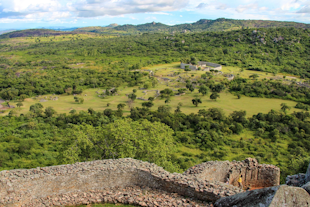
What are the Great Zimbabwe Ruins?
Why was this once-mighty citadel abandoned?



Similar to the best red wine and cheese, Hwange has only gotten better with age. Designated a national park in 1928, it’s one of the oldest on the continent and the largest in Zim at 14,650 square kilometres, most of which is deep Kalahari sand dotted with patches of mopane woodland. Doesn’t sound particularly safari-like? Well it wouldn’t be were it not for the network of watery pans, artificially pumped in the dry season, and the life source for over 100 mammal species. Elephants are the stars of the show here however, and the enormous pachyderms plod majestically over the plains and through the pretty camps to get to their drinking holes (and sometimes the camp swimming pool!)
Start with a recommended trip or create one from scratch
One of the oldest national parks in Africa and Zimbabwe’s largest, Hwange has a curiously sparse landscape but its trump card is the water-logged pans that attract wildlife from all around. Game drives are top of the list here. They allow you to cover the most ground, spotting massive herds of elephant (one of the largest populations on the continent), elusive African painted dog and around 100 other mammals. You’ll either leave in the early morning to catch stragglers returning from their exploits, late afternoon, or after sunset when the big cats are on the hunt, and nocturnal animals like bushbabies, mongoose and, if luck is on your side, the endangered pangolin come out. For a lesson in the subtle clues left behind by Hwange’s wildlife, a walking safari with an expert guide is an unforgettable experience that draws you closer to nature. Most lodges in Hwange have forged a close relationship with local communities, offering you the chance to learn about traditional crafting and conservation projects too.
Jan
Feb
Mar
Apr
May
Jun
Jul
Aug
Sep
Oct
Nov
Dec
Wet Season
Wet Season
Wet Season
Dry Season
Dry Season
Dry Season
Dry Season
Dry Season
Dry Season
Dry Season
Wet Season
Wet Season